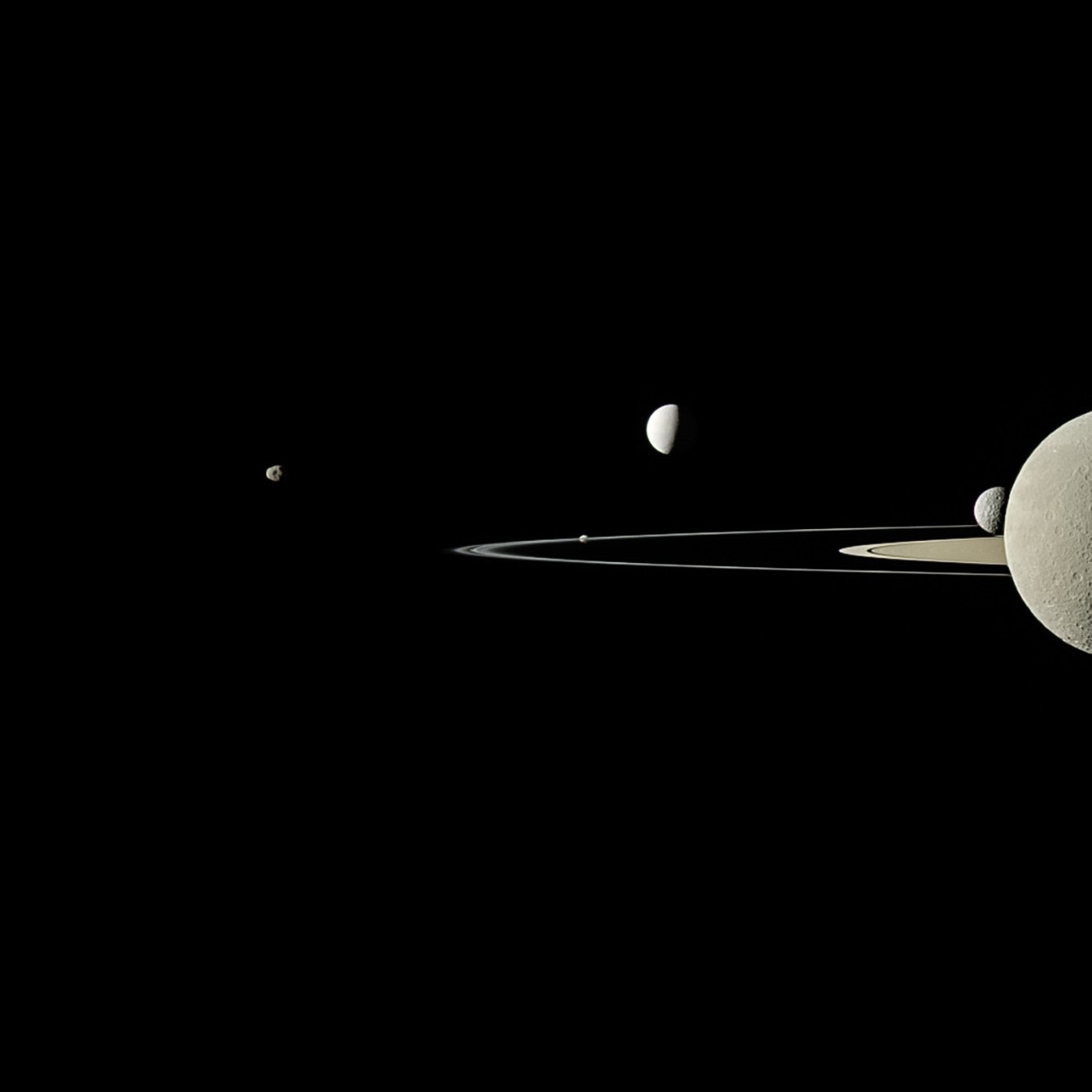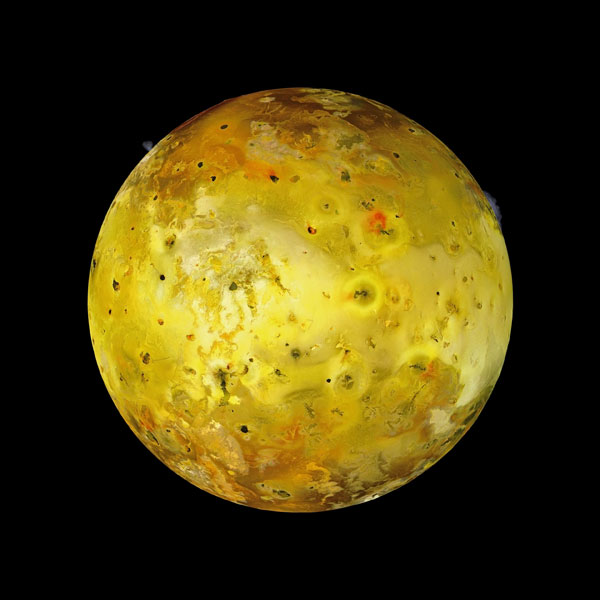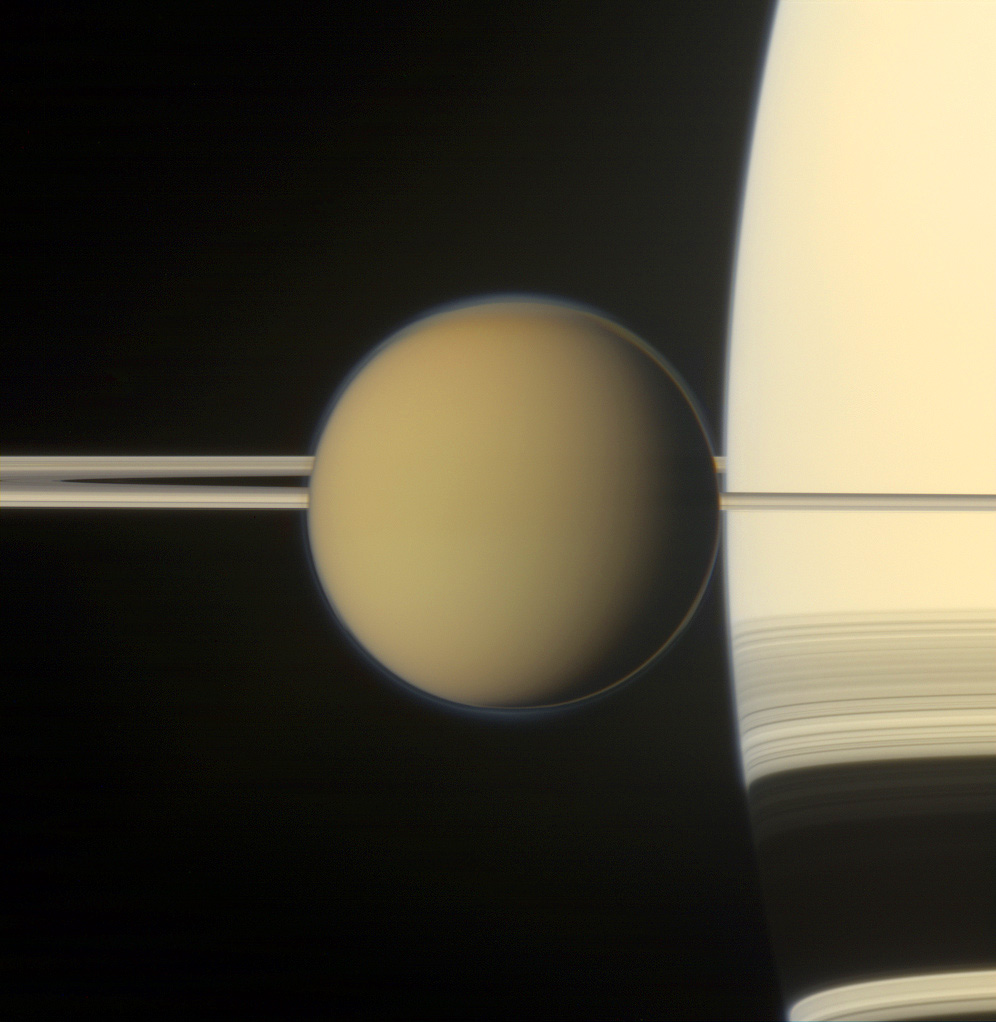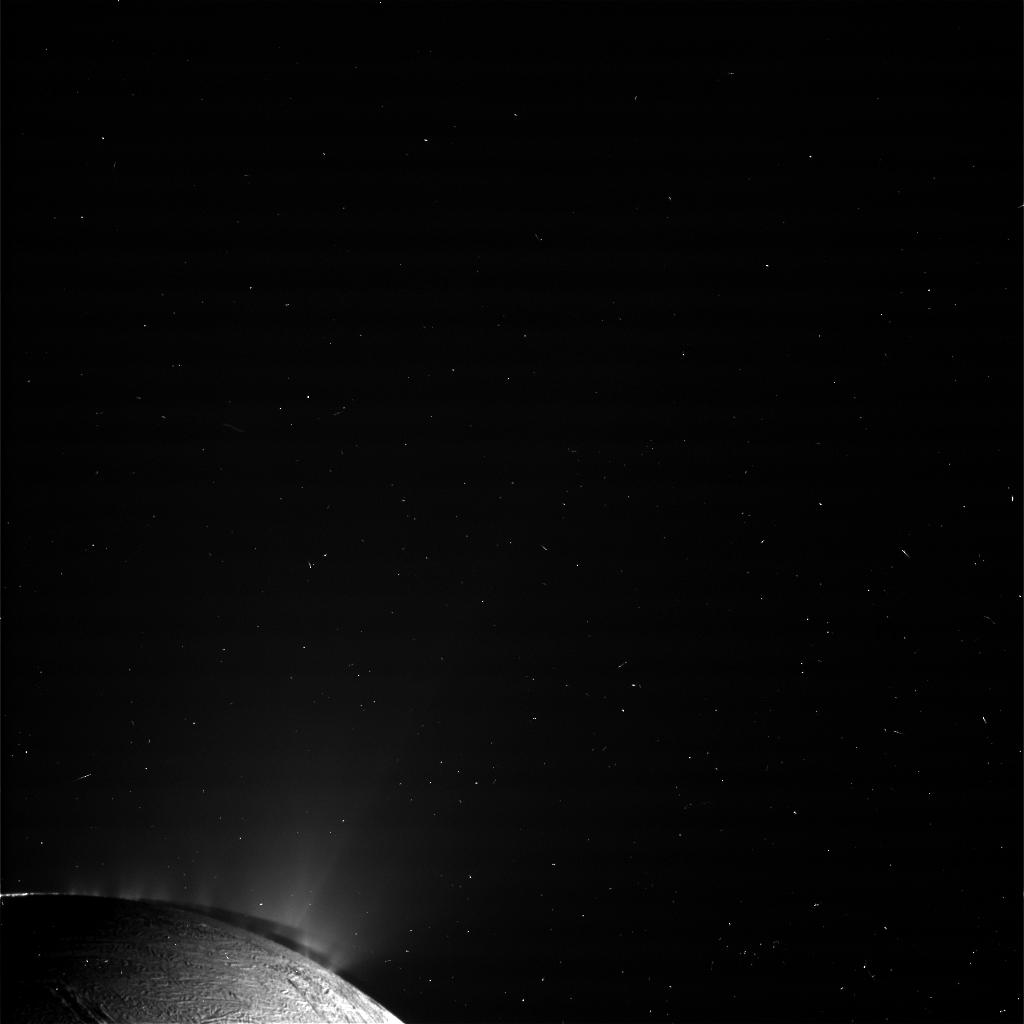From planetary.org: On July 29, 2011, Cassini captured five of Saturn’s moons in a single frame with its narrow-angle camera: Janus, Pandora, Enceladus, Rhea, and Mimas. NASA/JPL-Caltech/Space Science Institute. This is a full-color look at a view that was originally published in September 2011.
Taken on August 28, 2017. Credit: NASA/JPL-Caltech/Space Science Institute
Cassini’s Final Look at Enceladus
This is from images obtained by Cassini shortly before plunging into the Saturnian atmosphere. The images were taken over 14 hours and compiled into this animation.
Cyber Tuesday Spaceprobe Deal
 For two days only, buy one of our limited edition Robotic Spacecraft Series Prints and get the full suite of vinyl stickers for free. This is a total savings of $24 and would serve as a great stocking stuffer to follow the presentation of the print.
For two days only, buy one of our limited edition Robotic Spacecraft Series Prints and get the full suite of vinyl stickers for free. This is a total savings of $24 and would serve as a great stocking stuffer to follow the presentation of the print.
Poster #2: Cassini / Huygens
 Consider backing our Kickstarter project and get this Cassini poster, Voyager or Curiosity (or all three) as large scale screen-printed posters.
Consider backing our Kickstarter project and get this Cassini poster, Voyager or Curiosity (or all three) as large scale screen-printed posters.
Discover’s Best of Amateur Imagers
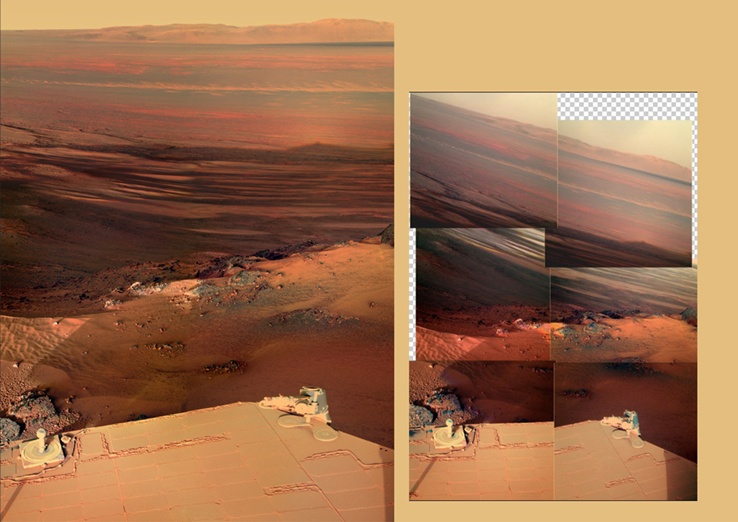 Discover online has an article today about some of the best in amateur space imaging. Many of which have been featured here on Wanderingspace before like Gordan Ugarkovic, Emily Lakdawalla and Bjorn Jonsson to name a few. The last item from Bill Dunford of Riding With Robots is an image that he actually suggested NASA point their HiRise cameras at that location. He suspected they might find something interesting there and they did —flash water movement and evidence of avalanches.
Discover online has an article today about some of the best in amateur space imaging. Many of which have been featured here on Wanderingspace before like Gordan Ugarkovic, Emily Lakdawalla and Bjorn Jonsson to name a few. The last item from Bill Dunford of Riding With Robots is an image that he actually suggested NASA point their HiRise cameras at that location. He suspected they might find something interesting there and they did —flash water movement and evidence of avalanches.
Enceladus has 101 Geysers
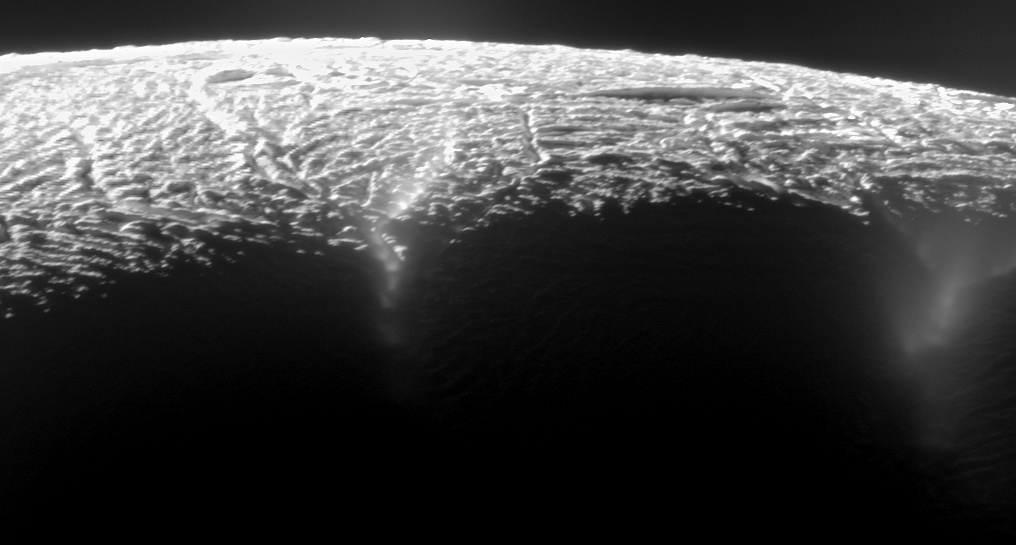 Apparently there are a whole lot of geysers on Enceladus, more than 100. Well only one more, but there are sure to be others. Most of the geysers spotted so far appear along the four noticeably visible “tiger stripes” that appear in the southern hemisphere.
Apparently there are a whole lot of geysers on Enceladus, more than 100. Well only one more, but there are sure to be others. Most of the geysers spotted so far appear along the four noticeably visible “tiger stripes” that appear in the southern hemisphere.
These are two of the most recent images to come from Cassini on this hot region of this medium sized moon. Nice seeing the detail on the geysers in the dark regions of the images where you can actually see where they are originating from on the surface.
Enceladus Lost in the Ring Haze
 The tiny but very active moon Enceladus is seen here lost within the E-Ring of Saturn. The moon, as many of us know, is quite active with cryo-volcanic geysers littered throughout the ridges of the “tiger stripes” found mostly in the moon’s southern hemisphere. Since most of the ejecta from Enceladus is jettisoned fast enough to escape the tiny moon’s gravity, most the material winds up orbiting Saturn itself and is therefore helping over a very long period of time to form Saturn’s E-Ring. This at least partly helps solve the question of where Saturn’s massive ring structure originates.
The tiny but very active moon Enceladus is seen here lost within the E-Ring of Saturn. The moon, as many of us know, is quite active with cryo-volcanic geysers littered throughout the ridges of the “tiger stripes” found mostly in the moon’s southern hemisphere. Since most of the ejecta from Enceladus is jettisoned fast enough to escape the tiny moon’s gravity, most the material winds up orbiting Saturn itself and is therefore helping over a very long period of time to form Saturn’s E-Ring. This at least partly helps solve the question of where Saturn’s massive ring structure originates.
Image by Val Klavans.
Around Saturn
Around Saturn from fabio di donato on Vimeo.
In Saturn’s Rings Official Trailer
The long awaited official trailer for “In Saturn’s Rings” has been unleashed. Looking forward to this film for over three years now.
Planetfall
Having followed the activities of a small army of freelance space imagers that lurk in various places on the internet for about 10 years now — it is truly unusual for me to come across images that I know I have not seen before. Michael Benson’s exhibit titled, “Planetfall” at the American Association for the Advancement of Science offers offer fresh views from missions as old as Viking and as new as Cassini. What originally caught my attention was an image of an actively spewing Enceladus that is exposed in both Sun and Saturn shine — a view I have surely seen before, but never so detailed or dramatic. Even more surprising and rare is a new global composite view of Uranus with a complete and continuous ring taken by Voyager almost 30 years ago.
The show ends soon (June 28, 2013) and is located in Washington DC.
Outer Space Art Film Uses Only Raw Images
Outer Space from Sander van den Berg on Vimeo.
Best of G. Ugarkovic (Last 8 Months)
If you follow this blog on any basis, you might be well aware that a good percentage of the imagery is provided by our good flickr friend Gordan Ugarkovic. Here is a bit of what we missed from him in the last 10 months we were locked out.
Titan at the edge of Saturn taken 2011-05-21. Looks unreal. Like Titan was dropped into the scene using Photoshop. A sin I would never commit. See the lesser “official” NASA version released a few months back here.
Keeping with the theme of moons transiting Saturn. Here is Rhea and tiny Epimetheus doing what they do. Taken in 2010-03-24.
Finally, just to change it up… two moons against Titan, another of Saturn’s moons. Pictured above the Titanian cloud-tops is Dione on the left and Rhea on the right.
Saturn’s Five
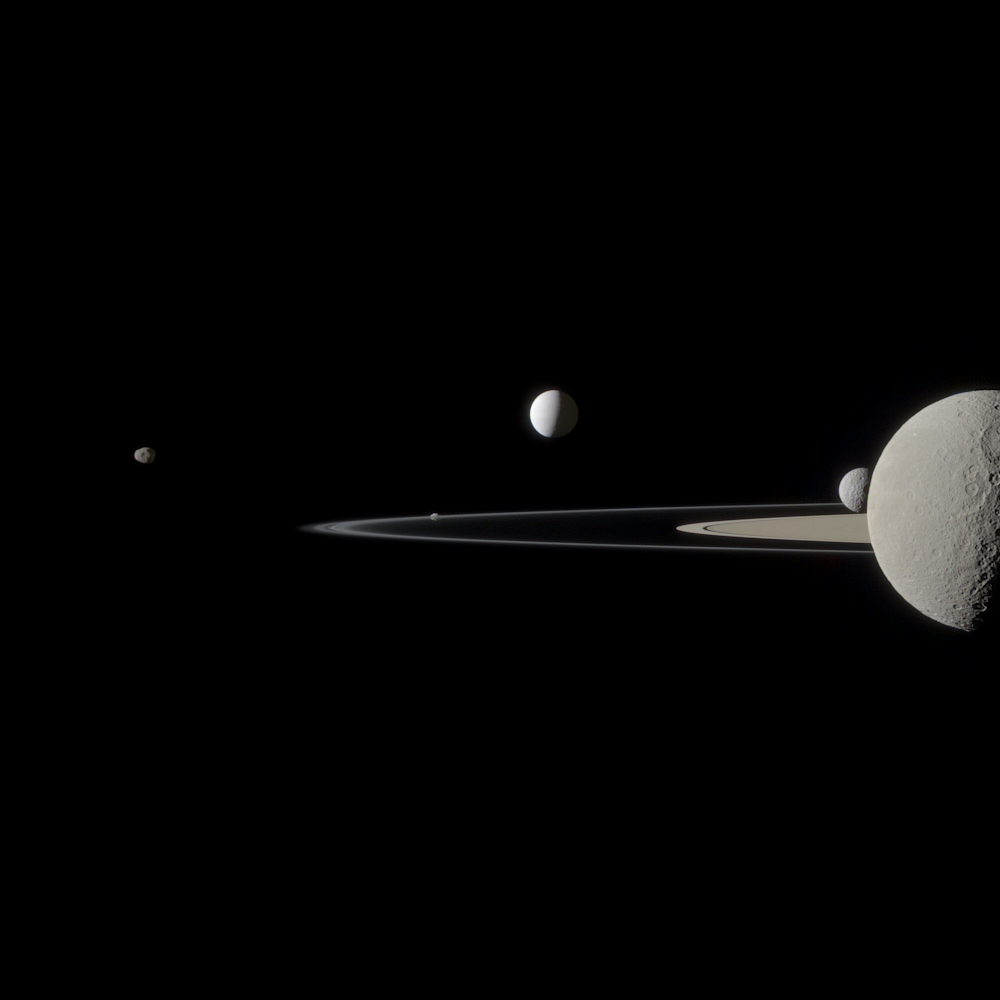 Space enthusiasts seem to really like shots that have more than one body in the same frame. How about five… or six (if you count the rings of Saturn)? Starting left to right that is Janus, Pandora, Enceladus, Mimas and Rhea.
Space enthusiasts seem to really like shots that have more than one body in the same frame. How about five… or six (if you count the rings of Saturn)? Starting left to right that is Janus, Pandora, Enceladus, Mimas and Rhea.
Thanks again to Gordan Ugarkovic.
Enceladus in Saturnshine
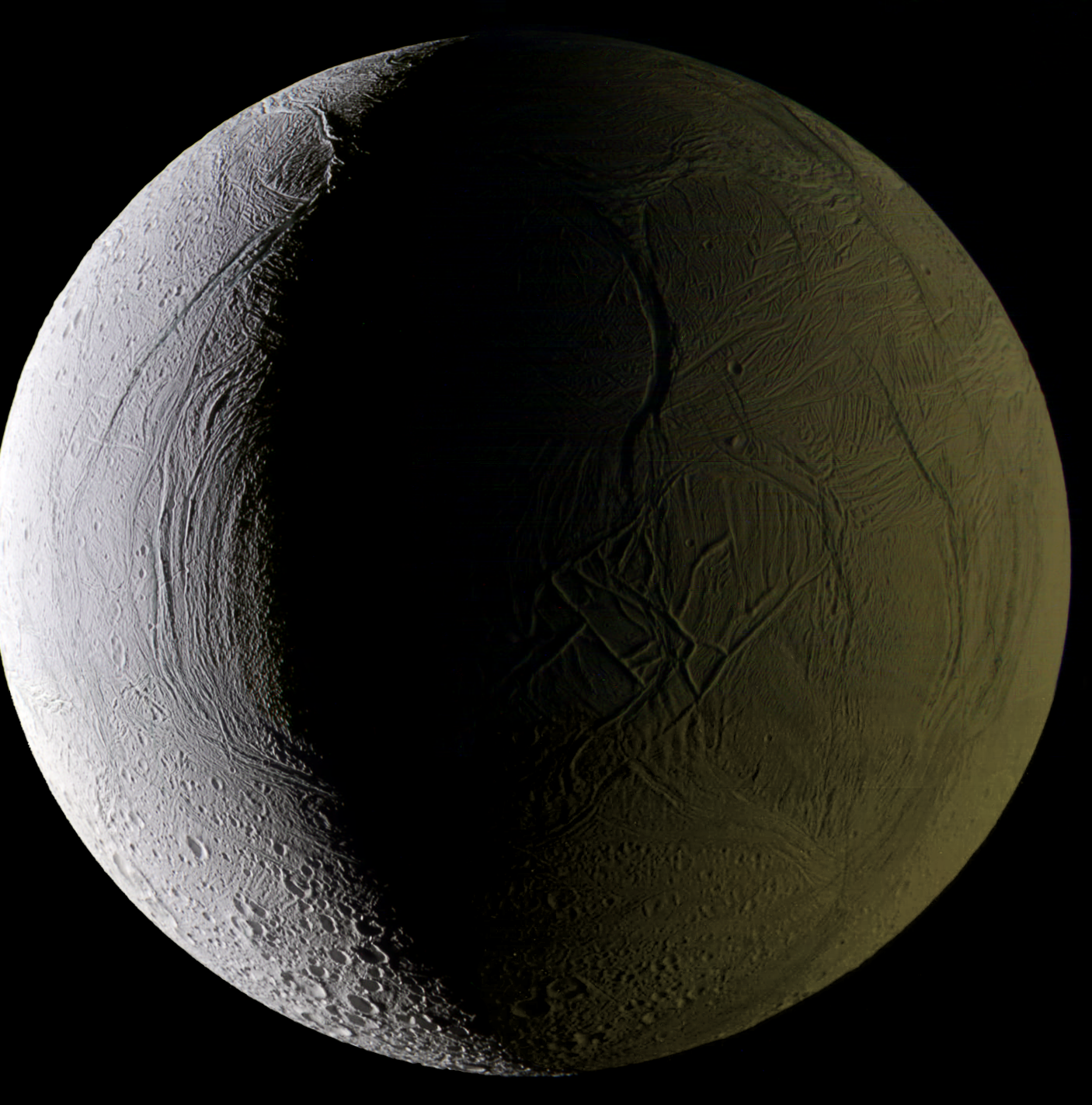
Ian Regan’s composite of the recent Enceladus flyby. Best yet image I have seen of Enceladus lit both by sunshine and light reflected off Saturn (aka Saturnshine).
Also the Gordan Ugarkovic image. Note the spewing geysers on the lower left.
Best Color Image or Geysers on Enceladus
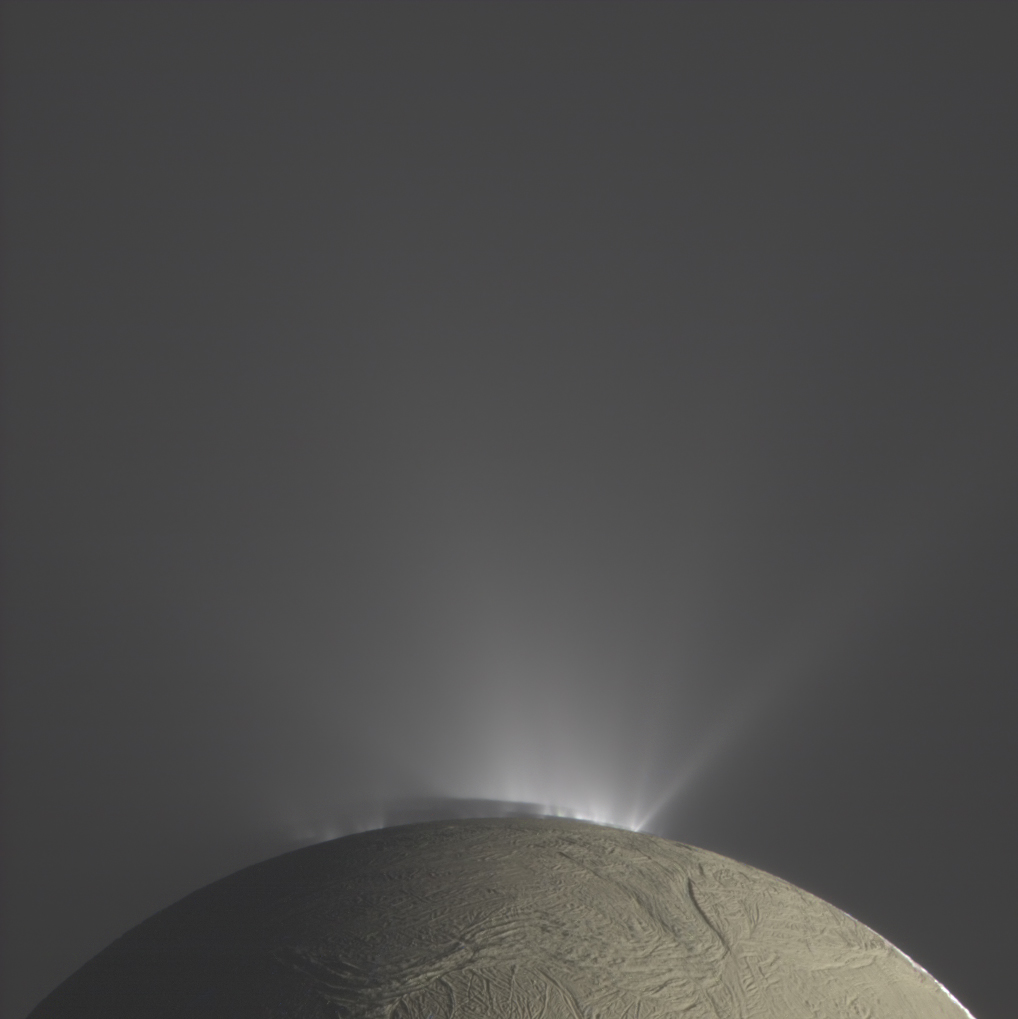 Brought (as always) to us from Gordan Ugarkovic.
Brought (as always) to us from Gordan Ugarkovic.
Saturn Cloudtops and The Fountains of Enceladus
 Wow. That is quite a mutual event. Saturn crescent haze about as dramatic as it is ever seen by Cassini but with the addition of an active Enceladus hanging above at such a scale is quite unreal. Color by Gordan Ugarkovic.
Wow. That is quite a mutual event. Saturn crescent haze about as dramatic as it is ever seen by Cassini but with the addition of an active Enceladus hanging above at such a scale is quite unreal. Color by Gordan Ugarkovic.
Enceladus Sprays the Stars
Mimas Wanders Into the Frame
The Plumes of Enceladus
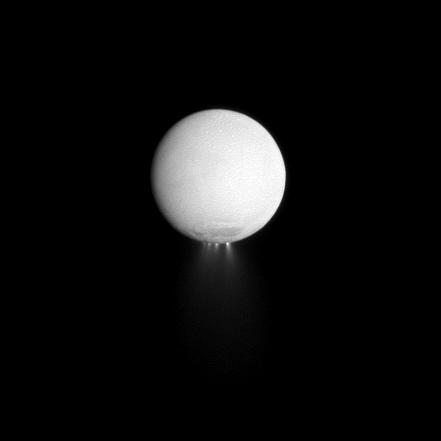 This is the best lit image taken of the plumes of Enceladus thus far by Cassini. The moon is lit from the front by Saturnshine and the plumes are being back-lit by the Sun directly behind. A perfect alignment for revealing active geysers on a small moon.
This is the best lit image taken of the plumes of Enceladus thus far by Cassini. The moon is lit from the front by Saturnshine and the plumes are being back-lit by the Sun directly behind. A perfect alignment for revealing active geysers on a small moon.
